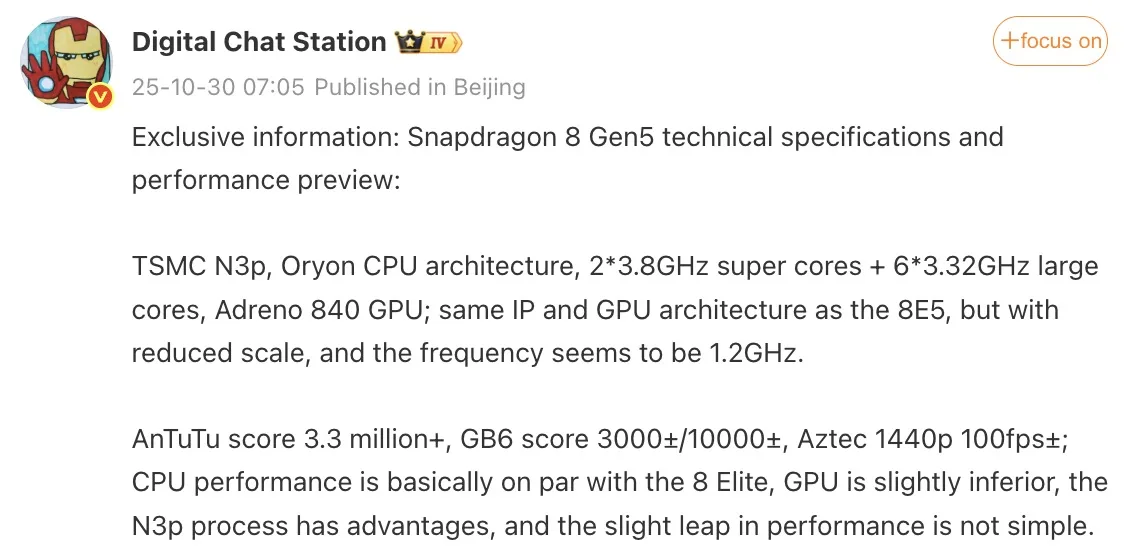Snapdragon 8 Gen 5: The New Chip Aims for Balance and AnTuTu Score of 3.3 Million
Just weeks after the launch of the Snapdragon 8 Elite Gen 5, Qualcomm is already working on its successor: the Snapdragon 8 Gen 5, the next iteration of its flagship series.
The well-known leaker Digital Chat Station has shared the first technical details and performance results of the chip—indicating a powerful beast balanced between performance and efficiency.
Snapdragon 8 Gen 5: Architecture and Process Technology
The Snapdragon 8 Gen 5 is based on TSMC’s N3P process, an optimized version of the 3nm technology that offers better energy efficiency than N3E.
The CPU configuration features the Oryon architecture, developed by Qualcomm:
- 2 ultra-performance cores clocked at 3.8 GHz,
- 6 performance cores at 3.32 GHz.
This combination promises raw power close to the Snapdragon 8 Elite, while reducing energy consumption and thermal issues.

Graphics and GPU Power
The chip features the Adreno 840 GPU, based on the same graphics architecture as that of the Snapdragon 8 Elite, but with a slightly lower frequency of 1.2 GHz. The result: high-performance graphics capable of handling games at 1440p close to 100 fps, according to the Aztec 1440p benchmark, all while being thermally more efficient.
Initial performance tests are very promising:
- AnTuTu: over 3.3 million points,
- Geekbench 6: around 3,000 (single-core) and 10,000 (multi-core).
These numbers put the chip slightly below the Snapdragon 8 Elite in terms of GPU but on par in CPU—with better thermal stability thanks to the N3P process technology.
Expected First Smartphones
Several Chinese manufacturers plan to adopt the chip upon its release:
- OnePlus Ace 6 Turbo,
- Vivo S50 Pro Mini,
- Honor GT 2.
Their launch is expected between November and December 2025, marking the first wave of devices powered by the Snapdragon 8 Gen 5.
In summary, Qualcomm is focusing on achieving a balance between power and endurance—a welcome strategy as high-end smartphones often tend to overheat under the strain of their own capabilities.




